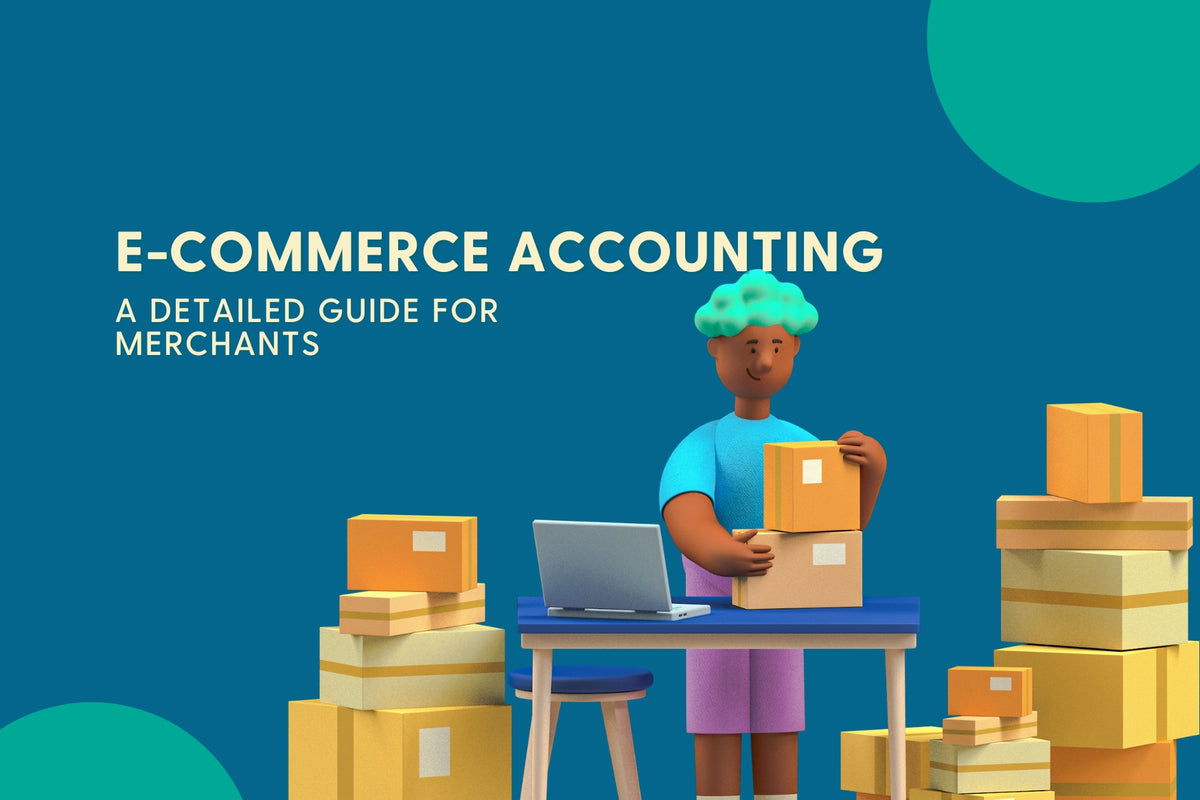The Covid-19 pandemic has turned lives and industries upside down. Fortunately for eCommerce merchants, it has resulted in a boom for online shopping as consumers turned to their internet-enabled devices to research and make purchases in the restricted environment.
However, the steady rollout of vaccinations around the world means that people will slowly but surely return to some form of normality. So what does this mean for e-merchants? Will there be a shift away from online commerce? What type of experiences will consumers want online now that they can have some freedom?
This article aims to answer these questions and help e-merchants best prepare their digital customer experiences for the new normal of a post-pandemic world.
What is Digital Customer Experience?
The digital customer experience is the perception consumers have of a brand based on their online interactions with it. These online touch points include websites (desktop and mobile), mobile apps, social media, emails, chatbots, and instant messaging services.
The digital customer experience became more important due to the pandemic as the eCommerce landscape grew. Not only were there the already established e-merchants, traditionally brick-and-mortar stores along with aspiring online entrepreneurs rushed to join the eCommerce gold mine. There was such a rush to adopt a digital presence that Shopify experienced a 53% rise in its Subscription Services revenue for Q4 2020.
As consumers become inundated with choice for online retailers, great digital experiences ultimately become the tool that cuts through the noise and differentiates businesses. This is something that savvy retailers have noticed, with almost 90% of companies surveyed by Gartner in February 2020 appointing a Chief Experience Officer, a jump from under 65% in 2017.
The pandemic has shaped the type of experiences consumers desire to have online. These new expectations will continue to be relevant once the restrictions ease.
How has the Pandemic Influenced Digital Customer Experience?
With restrictions beginning to ease in some parts of the world, e-merchants may be wondering how this will impact their businesses as well as what consumers will now expect.
Fortunately, research has shown that shoppers intend to continue with the online shopping craze, with 51% stating that they will carry on making purchases online as frequently as they do now after the pandemic. However, the way in which they interact with eCommerce may shift, so it’s vital for e-merchants to be up-to-date and well prepared for these upcoming changes.
One key behavioral change e-merchants need to know is that consumers have loved the convenience online shopping offered during COVID, 76% of them list convenience as their top priorities when it comes to shopping online. The convenience presented itself in giving shoppers the power to browse online and pick up in person. This delivery method was so popular that 51% of orders in 2020 were for in-store or curbside pickup, and 79% of buyers stated that it is an important option for them. Pair these statistics with further research by McKinsey finding that half of the consumers intend to continue these behaviors post-COVID, and we can safely assume that this trend is not going away anytime soon.

Source: Linn Works
In addition to convenient delivery options, consumers also want lightning-fast delivery. Gone are the days where they could forgive brands for service disruptions due to COVID. Now, only 21% are still doing so for slower delivery times. In fact, 95% of online shoppers consider fast delivery as a must-have.
Consumers have also become masters of multi-tasking, mostly due to the amount of technology we are surrounded by and the amount of spare time we’ve had. This has filtered into shopping with 70% of consumers multitasking - for example, scrolling through social media - whilst making online purchases. This “always-on” behavioral shift has meant that not only do they want to discover and learn about your brand via multiple online channels, they also want to purchase within these digital platforms.
The final key way COVID has influenced the digital customer experience is the large amounts of older consumers going online for shopping out of necessity and fear of infection. In the UK, more than half of people aged 65+ now shop online. The upshot of older online consumers is also the case in the US and Southeast Asia. 65+ is now the fastest-growing cohort of online shoppers in the US, and in Hong Kong older families increased their online shopping by 80% during the pandemic.

Source: NielsenIQ
This shift from older consumers is expected to stick post-pandemic with a global study revealing that 31% of them plan to continue shopping even as restrictions ease. Hence, simpler and more user-friendly experiences are even more important in the long run as these consumers are not as accustomed to the digital world as their younger counterparts.
How to Make Great Post-Pandemic Digital Customer Experiences
So what can e-merchants do to adapt to these behavioral changes and deliver top-notch digital customer experiences?
Personalization
To continue to attract people to your website amidst eased restrictions, personalized digital experiences will be the top priority.
Personalized digital experiences are much more than just addressing shoppers by name. Personalization in the new world now entails the customers feeling like online businesses know them and their preferences, as well as being valued as an individual. Here’s how you can cultivate these feelings:
- Personalized recommendations: in a study conducted to gather what consumers want from post-pandemic online experiences 65% of prosumers and 47% of mainstream consumers desire product recommendations based on their previous purchases.
Use customer data as a basis to know what types of products are commonly bought together and create a list of recommendations. If you are a Shopify merchant, doing this is a breeze! Product recommendations can be added automatically if you are using one of these themes.
Alternatively, Wiser is a great app for a personalized recommender system. You could also take it a step further by generating recommendations from the user’s unique browsing and purchasing history. Orcinus Product Recommendations can do exactly that for your Shopify store.

The current expectation for personalized recommendations may be down to the increased use of Amazon during the pandemic. As a standard, Amazon offers recommendations specifically tailored to each customer's unique interactions. (Source: Amazon)
- Personalized discounts: building on personalized recommendations, e-merchants could go further by coupling recommendations with discount codes. Not only will you be incentivizing repeat purchases, but you’ll also be catering to the 60% of consumers who expect this.
- Provide one-to-one connections: on top of curated choices, 73% of prosumers and 56% of mainstream consumers want personal advice and help in decision-making. Consider incorporating a live chat feature on your website, allowing customers to communicate with a real-life person at the very least during office hours. A virtual personal shopping assistant is also a great way to combine curating choices with human connections.

Create seamless digital journeys
With consumers now as excellent multitaskers in the online world, it is important for brands to have an omnichannel presence. This means that your online business should be present on a mobile app, email, various social media platforms and live chat in addition to the website. Within these channels, customers should be able to switch between them without having to repeat any actions they did elsewhere.
Ensure that customers are communicating either with the same representative regardless of the digital channel or make sure that their actions and interactions are saved for future reference. Allow your shoppers to begin their journey online and complete it offline, this is going to be super crucial post-pandemic - we’ll get into that below.
Shopify Plus offers an omnichannel commerce solution to get you on your way to creating seamless digital customer journeys.
Related: What is headless commerce? How can Shopify help merchants build headless commerce?
User-friendly digital channels
With the elderly, and therefore more novice, intending to continue shopping on digital platforms post-pandemic, “easy-to-use” will be a crucial characteristic.
Ensure that navigation throughout your desktop site, mobile site, and mobile apps are simple and intuitive with few steps to complete the desired action. To do this you’ll want to do a few things:
- Use meaningful labels on your navigation bar that clearly indicate the section customers will be taken to
- Keep elements such as the search bar or icon in the same place on all pages
- Use a hamburger bar on mobile devices
- Have a simple sitemap
When it comes to mobile devices, the smaller screen size means that there are some adjustments to be made to make it user-friendly like larger buttons and larger typography.

The Buzzfeed mobile site displays articles in a collage-like manner, using large images that are easy to tap with a finger. They also make use of a hamburger icon for their menu, saving much needed space. (Source: Hubspot)
You may also be interested in How To Build Exceptional Site Search Experience: Top Tips for Search UI/UX
The final thing to address when it comes to user-friendly digital channels is the checkout process. Did you know that the global cart abandonment rate is 75.6%? Whilst the reasons for this alarming number varies, eCommerce sites with an optimized checkout process only receive a 20% abandonment rate.
Optimize your checkout process by:
- Being upfront about your shipping costs and additional fees
- Allowing customers to save their card and delivery details
- Clearly labeling the data fields
- Providing a variety of payment options
- Guaranteeing secured payments
Go social
The pandemic has caused people to spend more time on social media and consequently buy more through social media. This has become so profound that a study by Harvard Business Review found that companies are seeing historic returns on social media investments during the outbreak. According to Statista, in the US alone, social commerce sales are expected to reach $51.8 billion by 2022. Social media has gone beyond just being a place to share fun, personal posts with the world, it has evolved into a storefront.
It’s now evident that consumers want to engage with brands in the more personable way social media affords them. That they value the experience they get from social media, so much so that it’s propelled spending. Not only should companies prepare to sell through social media in a post-pandemic world, but they also need to be providing incredible experiences through these channels. To do this, you should:
- Encourage user-generated content to form a community and conversation around your brand. Check out this article for best UGC practices.
- Create shoppable posts and add your inventory to Facebook Shop and Instagram Shop to harness the power of social commerce as one of the most noticeable M-commerce trends.
- Make use of new tools like Instagram Reels, TikTok for Business, and Facebook Gift Cards to form more unique connections with your customers.

Before you even see the product details, Steve Madden draws in content from their Instagram UGC campaign to be displayed on popular product pages. This shows that the brand understands the significance of UGC for customers. (Source: Steve Madden)
Social interactions don’t need to be limited to just social media, you can also encourage this on your eCommerce store too. Product review apps are the perfect way to do it, especially as 93% of consumers rely on reviews to inform their purchasing decision. These apps allow customers to leave reviews on products they’ve purchased, and can even pull in social media content related to your products .
Related: Why your Shopify store needs a product review app and Top apps to try (2021 updated)
Meet delivery expectations
We now know that consumers want super fast delivery and the ability to collect their orders themselves, even when the pandemic is over. In light of this, e-merchants will need to optimize their fulfillment process to enable quick delivery.
Identify where your customers are and have your inventory in warehouses close to their locations through third-party logistics services. Offer a click-and-collect option so customers can retrieve their orders locally. Shopify merchants should head here for a breakdown of how to provide local pickup options for their store.
Related: 4 Changes in The Future eCommerce Retail Post-Pandemic
Post-purchase communication
The digital customer experience does not end the moment the customer orders your products. It filters all the way through to the delivery process and should continue even after they have received their order so you can encourage repeat purchases.
97% of customers expect to be able to monitor the status of their order at every step until it reaches them. Hence, e-merchants should notify their customers when their order has been processed, shipped from the warehouse, and picked up for delivery. On Shopify, when the order and shipping statuses are manually updated, an email or text message will be sent to the customer containing the link to the “Order Status” page. Here, customers can view the progress of their order. If you’re wanting to streamline this process, apps like AfterShip allow effortless order tracking.

AfterShip gives Shopify merchants the ability to create branded and automated tracking pages. It also allows customers to leave reviews, will notify them on 7 different order stages, and connects merchants to 700+ couriers worldwide. (Source: AfterShip)
Stay connected and keep customers coming back after they have purchased with offers of exclusive discounts, links to your social accounts, requests for product and/or service reviews, and invitations to loyalty programs.

Final Thoughts
The pandemic has caused the digital landscape to play a much more prominent part in people’s lives, particularly when it comes to shopping. Expectations have changed in a way that is going to have a lasting effect on the eCommerce world.
With an understanding of what customers want from the digital environment, e-merchants can strive to deliver superior digital customer experience that will help them remain relevant even after the pandemic subsides. We hope these insights will have you well on your way to doing exactly that!



